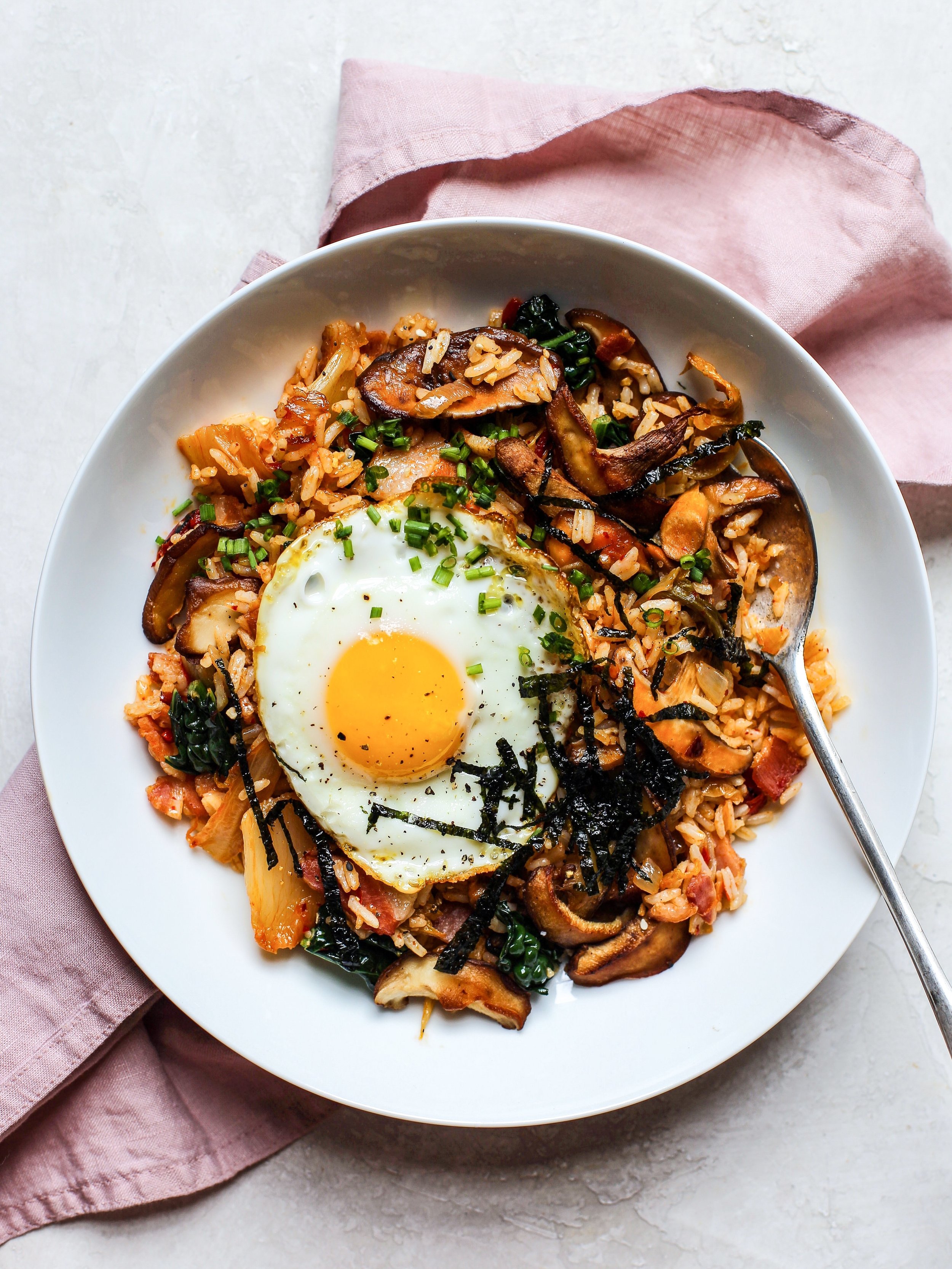Kimchi Fried Rice with Shiitake Mushrooms
When I think of my time in South Korea, the aroma of kimchi, perilla, sesame oil and steamed rice come to mind. I taught cooking to elementary level students there for six years, which brought so much joy and so much growth on a personal level. This recipe wouldn’t normally be called kimchi fried rice or “kimchi bokkeum bap”, instead the kids would playfully call it something like it “sseulegi bap” - Roughly translated to “mixed rice” or more bluntly, “trash rice.” Basically, rice fried with whatever you have on hand. It’s great because you cook everything in one pan and if you have leftover rice which is essential, it’s a breeze to throw together. I often serve it to friends and family who have never tried Korean flavors but are curious about it. They are more accepting of a dish like this as opposed to hitting them with heavily fermented dishes off the bat.
Top it with an egg to make it extra special.
Ingredients:
Serves 2
1 shallot, finely minced
4 cloves garlic, finely minced
1 teaspoon ginger paste
4 rashers uncured bacon, chopped (Use turkey bacon or omit completely if you prefer)
1 cup kimchi
1/2 cup kimchi juice (from the jar)
2 cups sliced golden oak shiitake mushrooms
4 cups day-old rice
1 cup lacinato kale or spinach, chopped
1 teaspoon toasted sesame seeds
1 teaspoon toasted sesame oil
Optional to serve: Dried and salted laver & olive oil fried eggs.
Guidelines:
Bring a large wok or skillet to medium heat. Add shallot, garlic, ginger, bacon and kimchi all at once and sauté for 5 minutes until bacon fat has rendered and shallots are translucent. The kimchi would’ve crisped up a little around the edges because of the bacon fat - Wait until this stage for maximum flavor.
Deglaze the pan with kimchi juice, scraping off any crispy bits stuck at the bottom of of pan. Adjust heat to medium-high then add rice and mushrooms. Cook for 5-8 minutes until rice takes on some color and dries up a little. Then add kale or spinach (any greens will do), sesame seeds and finish with sesame oil. Season to taste and serve.



